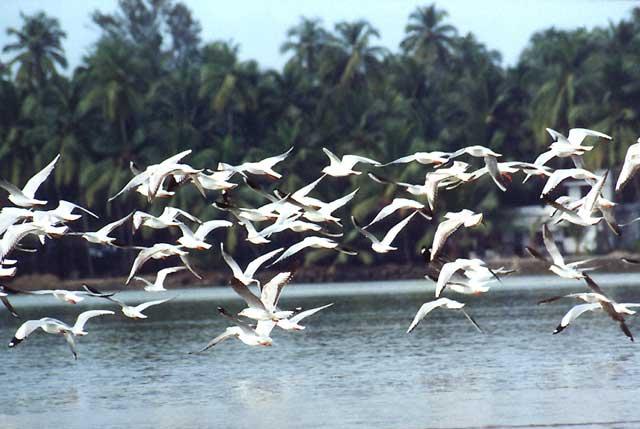Recent scientific advancements around the world have conflicted with some environmental systems; hence, there are many struggles to create a balance. One of the talking points is the “towerkill”.

“Towerkill” is a phenomenon that describes the killing of a large number of bird species by antenna towers and masts. According to the U.S. Fish and Wildlife Service, it is estimated that between five and 50 million birds are killed in the United States each year by towerkill while “window crashes” kill between 100 and 900 million birds a year. Considering that lots of endangered bird species make these figure, the impact is huge, thus, regarded as the leading human-related cause of wild bird death.
Telecommunication and broadcasting companies need towers and masts for antennas, yes; migratory and cosmopolitan birds also find them as nesting sites but the greater concern is how to reduce the threats “towers” pose to the survival of birds.
No doubt, birds are a part of our natural environment, they have developed quite some biological and behavioural adaptations to help them thrive and survive within and outside their natural habitat. Birds are even referred to as “environmental indicators” because of their ability to detect the slightest change in our environment, years before humans and machines will. Remember the biblical story of Noah and the flood? He sent out two different bird species, the raven and the dove to check if the water has abated.
The raven didn’t return, while on the other hand, dove can back initially because there was no suitable habitat to nest and the second time with an olive leaf which indicated that plants have started growing.
Birds live in and near trees which are their natural source of habitation because it provides them with the needed materials to build their nest and also get food supplies from the insects and worms on and around the trees.
The irony is that cosmopolitan birds such as the Falcon, Osprey and Egret have been found to adapt well to the city structure, while on the other hand migratory birds like Bald Eagle, Belted Kingfisher, Canada Goose, Common Merganser, Common Tern, Double-crested Cormorant, Great Blue Heron, Spotted Sandpiper, Swamp Sparrow and Trumpeter Swan that migrate yearly from Europe to Africa during winter find it herculean.
In the city, most of these birds prefer to build their nest on these very tall antenna towers during stopovers because the height of the towers is higher than the trees, which provides them with a bird’s eye view of nearby potential feeding spots.
Because of their flight speed, especially when flying in poor visibility, birds are involved in a blind collision with antenna towers. Another threat that has resulted in “towerkill” is linked to the non-flashing light fitted at the top of cell towers to provide aviation safety for pilots flying at night.
When the weather is foggy, the indicator lights on the tower tend to refract off water in the air, which in turn creates an illumination around the tower. These causes interference in the avian navigational system, making migratory birds lack the ability to monitor earth’s geomagnetic fields and as a result leading to more birds passing through the relatively small illuminated area and the inevitable collision with towers and “guy wires” attached to the tower.
Needless to say, environmentally sustainable and bird-friendly towers, with flashing indicator light instead of non-flashing light should be considered, if we want to maintain a balanced ecosystem for the survival of these avian species. Countries should ensure constant bird monitoring and the application of a Geographical Information System (GIS) in mapping and maintaining of all antenna towers sites which would be used to track, monitor and evaluate bird biodiversity around the locations of these towers which have become their new found home in the city.
By Emmanuel Uko (Nigeria Conservation Foundation, Lagos)
